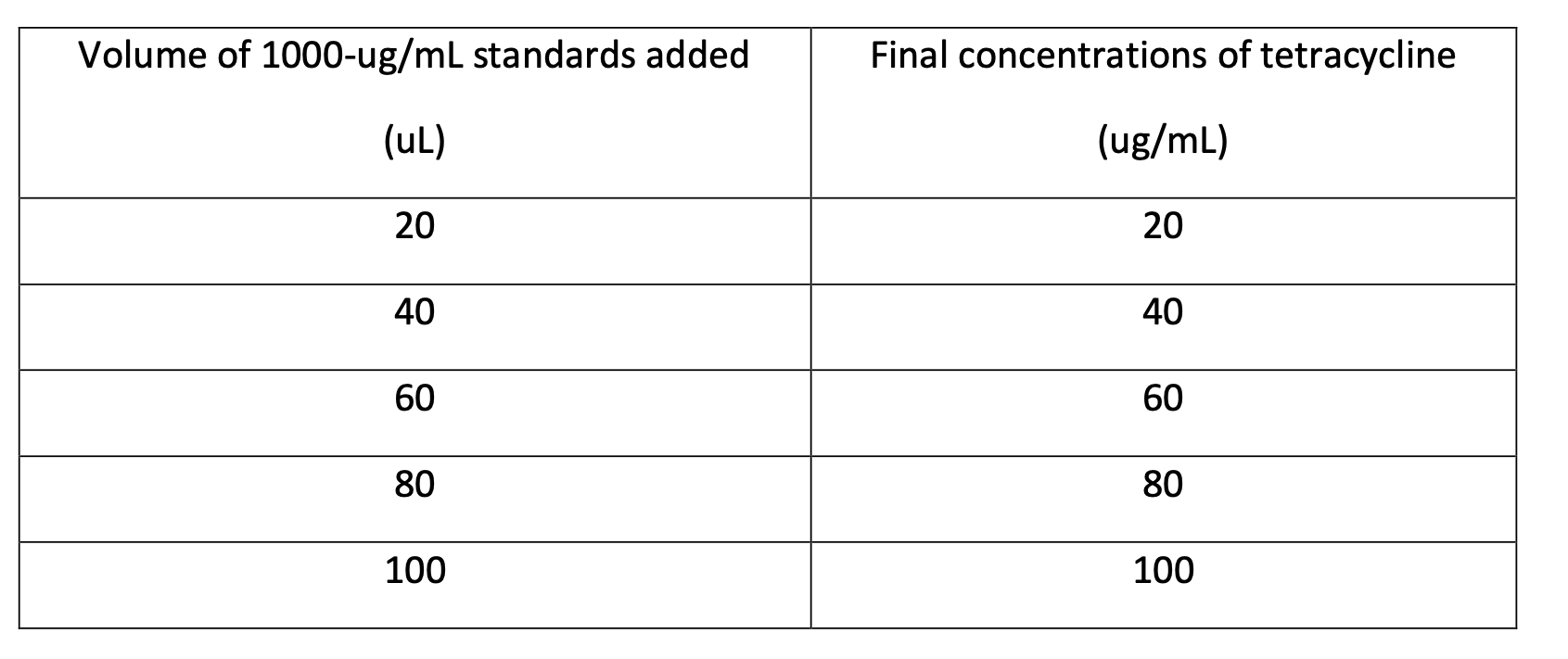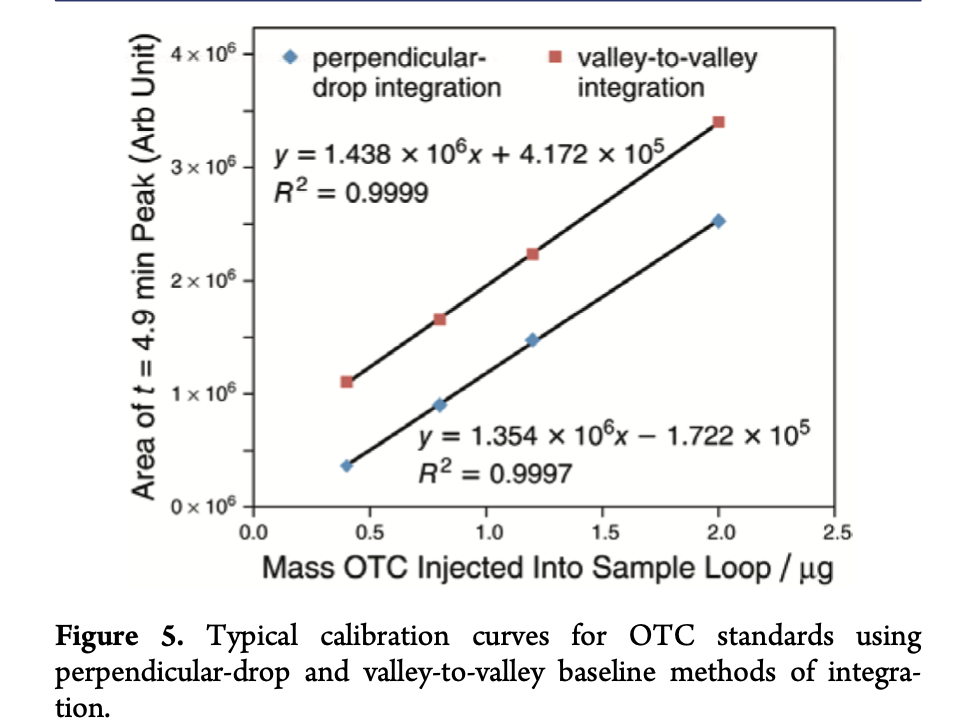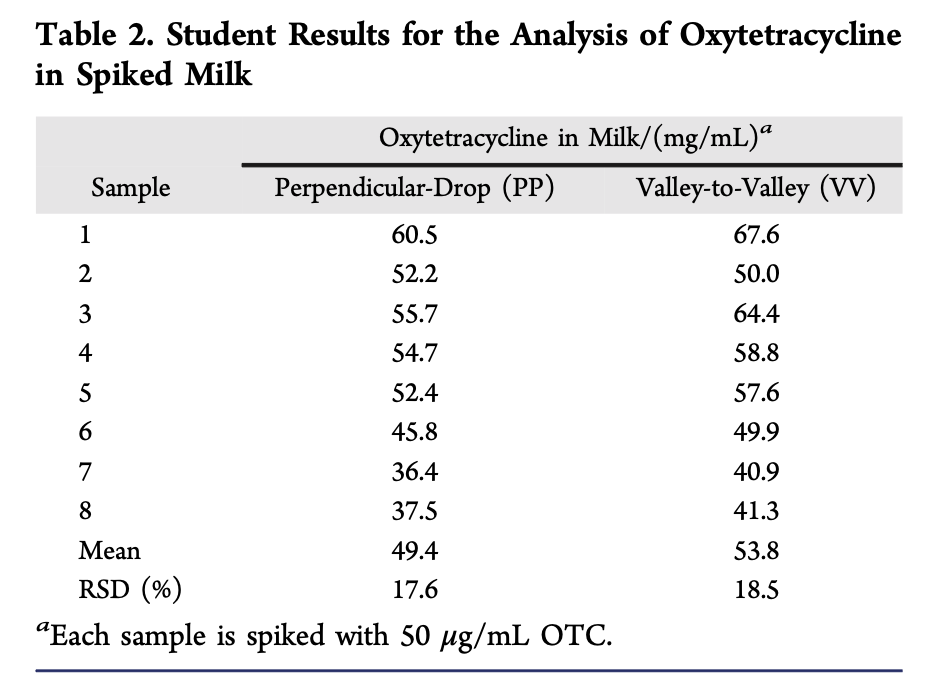Question
Preparation of calibration standards: 1. Add 1000ug/mL stock solutions of each of the tetracyclines into a wide-bottom, 1-mL volumetric flask according to the table below
Preparation of calibration standards:
1. Add 1000ug/mL stock solutions of each of the tetracyclines into a wide-bottom, 1-mL volumetric flask according to the table below to make five calibration solutions. Use methanol to dilute to the mark.

Pre-treatment of the SPE cartridges:
1. Place three cartridges on the Visiprep manifolds securely. Make sure that each one is attached to a new, clean liner that is received by a test tube in the manifolds.
2. Add 2.0mL methanol to the cartridges, turn on the vacuum valve and let drain. When the vacuum valve is fully open the flow rate is approximately 2-mL/min.
3. Discard the drained solutions and return the test tubes to the original positions.
4. Add 2.0mL McILvaine buffer solution into the cartridges and let drain in the Visiprep manifolds in the same manner.
Preparation of the milk sample; SPE adsorption and desorption of the milk sample:
-
Commercial milk should be kept in plastic containers @4oC in the dark.
-
Add 2.0-mL of the milk sample to a 15-mL plastic centrifuge tube, and then add 6.0-mL of the McILvaine buffer solution into the tube. Repeat this step two more times.
-
Agitate on the vortex mixer for 1 minute. Then centrifuge for 5 minutes to allow complete precipitation of the denatured protein.
-
Decant the top solution and add into the pretreated SPE columns, let drain in the Visiprep manifolds and discard the eluent.
-
Add 1.0-mL of 2.0% methanol in H2O solution to wash off residual sugars. Discard eluent.
-
Change the plastic liners in the Visiprep manifolds. Place previously cleaned (by methanol), test- tube shaped 1.0-mL volumetric flasks under the cartridges to collect the eluted tetracycline in the next step.
-
Add 750-L HPLC grade methanol to the cartridge to elute the tetracycline. If the volume exceeds the marked line, then let the extra solvent evaporate under a gentle stream of nitrogen gas to below the line. Eventually top off the solution with methanol to the correct volume.
8. Analyze immediately on the HPLC or keep refrigerated in the dark. Shelf time should be kept to as short as possible.


Calibration Curve and Data Handling
A calibration curve was generated using serial dilutions of a 1000 g/mL OTC stock solution to final concentrations ranging from 20 to 100 g/mL. Automatic peak integration was performed by the computer software standard to the Shimadzu HPLC instrument. Chromatograph peak areas obtained by two integration methods, perpendicular-drop (PP) and valley-to- valley (VV), may both be used for peak integration to illustrate the effects of software choice on analytical results. The final OTC concentration in the milk sample was calculated from the calibration curve, corrected by a preconcentration factor of 2, and reported in micrograms per milliliter.
This experiment takes between 4 to 8 h to complete depending on how much material and instrumental preparation students have to perform independently.
Question: Make an estimate of how some of the results were obtained in the table 2.
Volume of 1000-ug/mL standards added Final concentrations of tetracycline (UL) (ug/mL) 20 20 40 40 60 60 80 80 100 100 4 x 106 perpendicular- drop integration valley-to-valley integration 3 x 106 y = 1.438 x 106x + 4.172 x 105 R2 = 0.9999 = Area of t = 4.9 min Peak (Arb Unit) 2x 106 1 x 106 - y = 1.354 106x 1.722 x 105 R2 = 0.9997 = 0 x 106 0.0 0.5 1.0 1.5 2.0 2.5 Mass OTC Injected Into Sample Loop / ug Figure 5. Typical calibration curves for OTC standards using perpendicular-drop and valley-to-valley baseline methods of integra- tion. Table 2. Student Results for the Analysis of Oxytetracycline in Spiked Milk Sample Oxytetracycline in Milk/(mg/mL)a Perpendicular-Drop (PP) Valley-to-Valley (WV) 60.5 67.6 52.2 50.0 1 2 64.4 va a + N = 3 4 55.7 54.7 52.4 5 58.8 57.6 49.9 6 45.8 7 36.4 40.9 8 41.3 53.8 37.5 Mean 49.4 RSD (%) 17.6 "Each sample is spiked with 50 ug/mL OTC. 18.5Step by Step Solution
There are 3 Steps involved in it
Step: 1

Get Instant Access to Expert-Tailored Solutions
See step-by-step solutions with expert insights and AI powered tools for academic success
Step: 2

Step: 3

Ace Your Homework with AI
Get the answers you need in no time with our AI-driven, step-by-step assistance
Get Started


